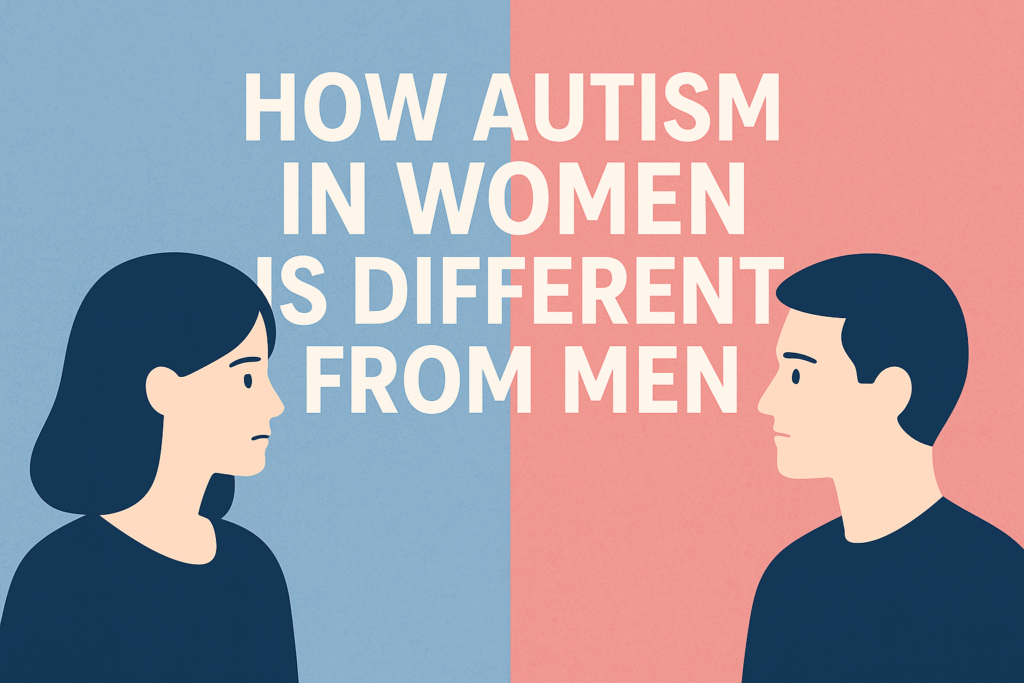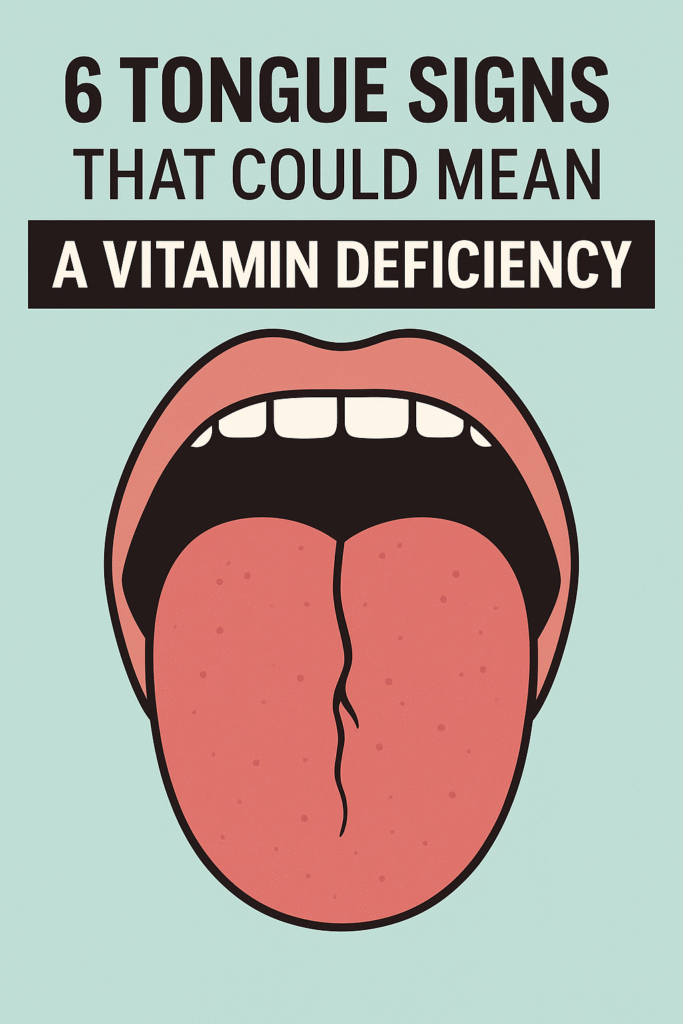
⚠️ Affiliate Disclaimer: This post may contain affiliate links, which means I may earn a small commission — at no extra cost to you — if you make a purchase through one of these links. I only recommend products or services I genuinely trust and believe can provide value. Thank you for supporting My Medical Muse!
How Autism in Women Is Different from Men 10 Powerful Insights
How Autism in Women Is Different from Men: Key Signs, Challenges, and Insights
Autism Spectrum Disorder (ASD) has traditionally been understood and researched through a male-centered lens. For decades, the diagnostic criteria, clinical studies, and even public awareness campaigns have primarily focused on how autism presents in boys and men. This has led to a significant gender gap in recognition, diagnosis, and support.
Women and girls on the spectrum often go unnoticed, misdiagnosed, or diagnosed much later in life compared to their male counterparts. They may not fit the “stereotypical” image of autism and are more likely to mask or camouflage their autistic traits to blend into social expectations.
Understanding how autism manifests differently in women is crucial, not only for accurate diagnosis but also for ensuring that autistic women receive the right support, validation, and opportunities to thrive.
This article takes an in-depth look at the unique ways autism presents in women versus men, the reasons behind delayed or missed diagnoses, and the broader implications for healthcare, education, and personal identity.
Why Autism in Women Is Overlooked
Historical Bias in Research
For decades, autism research focused heavily on boys. Early diagnostic models were based on observations of boys with classic traits: limited eye contact, repetitive behaviors like lining up toys, and strong fixations on narrow interests (such as trains or math), because these became the “benchmark signs,” girls whose traits differed were often missed.
The Male-to-Female Ratio Debate
It is often reported that autism is four times more common in boys than in girls. However, emerging research suggests this gap may not reflect reality, it may reflect diagnostic bias. Some studies argue that the true ratio is closer to 3:1, or even 2:1, once girls who “fly under the radar” are considered.
The Masking Effect
Girls and women often develop coping strategies to camouflage autistic traits. They may mimic peers, rehearse social scripts, or suppress stimming behaviors to avoid standing out. While masking helps them navigate social expectations, it also leads to underdiagnosis and mental health struggles.
Core Differences in How Autism Presents in Women
Autism is defined by challenges in social communication, restricted or repetitive behaviors, and sensory differences, but within that framework, the way these traits show up can differ significantly between men and women. These differences often explain why autistic women remain underdiagnosed or misunderstood.
Social Interaction Styles
- Men: Autistic men are more likely to appear socially aloof or detached. They may avoid eye contact, seem uninterested in conversations, or fail to initiate social interaction altogether. This outward withdrawal often fits the stereotypical diagnostic profile, making it easier for teachers, parents, or clinicians to flag concerns early on.
- Women: Autistic women often show a strong desire to connect and maintain friendships. They may smile, ask questions, and imitate peers’ social behaviors to fit in. At first glance, they can appear socially competent. However, sustaining these relationships can be challenging because the effort required to keep up with unspoken rules and social reciprocity is exhausting. Many women describe feeling like “outsiders looking in,” always working harder than others to maintain social bonds.
While autistic men may be overlooked because their social withdrawal is attributed to shyness, autistic women may be overlooked precisely because they seem too socially engaged to fit the stereotypical picture of autism.
Special Interests
- Men: Autistic men are often described as having “restricted” or “narrow” interests, topics like trains, mechanics, technology, or numbers. Because these align with traditional stereotypes of autism, they are more easily recognized as diagnostic markers.
- Women: Women on the spectrum have equally intense passions, but their interests may align more closely with what is considered socially acceptable or “ordinary.” These can include animals, art, celebrities, fashion, literature, or specific social causes. To outsiders, these passions may look like hobbies rather than autistic fixations. For example, a girl deeply immersed in reading every book about horses or knowing every detail about a favorite pop star may be dismissed as simply “enthusiastic” rather than autistic.
Women’s special interests often overlap with typical gendered hobbies, their autistic traits are misread as personality quirks instead of diagnostic indicators.
Communication Patterns
- Men: Autistic men may use fewer words, avoid small talk, or struggle with back-and-forth exchanges. Their communication can come across as blunt, literal, or detached, which often leads to misunderstanding but also fits neatly into expected autism profiles.
- Women: Many autistic women are highly verbal and articulate, sometimes even excelling in vocabulary and storytelling. On the surface, this fluency hides underlying struggles. While they may appear socially adept, they often struggle to grasp the hidden layers of communication like sarcasm, tone of voice, body language, and subtle shifts in conversation dynamics. This gap between outward fluency and inner confusion can cause social fatigue and feelings of inadequacy.
Strong verbal skills in autistic women can mask deeper social-communication difficulties, delaying recognition of autism.
Repetitive Behaviors and Stimming
- Men: Repetitive behaviors like hand flapping, rocking, or spinning objects tend to be more obvious in autistic men. These visible behaviors often alert parents and educators early on.
- Women: Stimming in women may take more socially acceptable or subtle forms, such as twirling hair, doodling, tapping a pen, or picking at nails. These behaviors are often overlooked or dismissed as “nervous habits” rather than understood as self-regulation strategies. Because they don’t disrupt the classroom or social setting in the same way, they rarely trigger evaluation.
subtler nature of stimming in women makes one of autism’s hallmark traits less recognizable in girls and women.
Emotional Regulation
- Men: Emotional regulation issues in autistic men may show up as meltdowns, aggressive outbursts, or sudden shutdowns when overwhelmed. These externalized responses are visible to others and often raise red flags early in childhood.
- Women: Autistic women often internalize their emotional struggles. Instead of external meltdowns, they may withdraw, suppress emotions, or redirect distress inward. This pattern contributes to high rates of co-occurring conditions such as anxiety, depression, self-harm, or eating disorders, because these issues fit common mental health categories, they are often treated in isolation while the underlying autism goes unrecognized.
The tendency for autistic women to internalize distress leads to misdiagnosis and missed opportunities for autism-focused support. The core features of autism, social communication challenges, intense interests, repetitive behaviors, and emotional regulation difficulties are universal, but they don’t look the same across genders. Men often show more outward, “stereotypical” traits, while women may camouflage theirs through masking, socially acceptable interests, or internalized struggles.
This gendered difference is at the heart of why so many women remain underdiagnosed or misunderstood well into adulthood.
The Role of Masking and Camouflaging
What Is Masking?
Masking refers to the conscious or unconscious effort to hide autistic traits and mimic neurotypical behaviors. For autistic women, masking often becomes second nature, learned as a survival strategy in school, workplaces, and social environments. Examples include:
- Smiling even when overwhelmed to avoid being perceived as rude or unapproachable.
- Copying slang, mannerisms, or speech styles from peers in order to “blend in.”
- Memorizing social scripts such as how to greet people, when to laugh, or what to say in small talk.
- Suppressing sensory sensitivities in public, like enduring loud noises or uncomfortable fabrics without showing discomfort.
At first glance, masking can make an autistic woman appear socially competent, but the reality underneath is very different.
The Cost of Masking
Masking may protect women from bullying or exclusion, but it comes at a steep psychological and physical cost:
- Exhaustion: Constantly monitoring and rehearsing behavior drains cognitive and emotional energy, leaving little capacity for other tasks.
- Burnout: Many autistic women experience autistic burnout, an intense state of physical and mental depletion after years of overcompensation.
- Identity Confusion: When masking becomes habitual, it can blur the sense of self. Women may struggle to know who they are outside of their social “performance.”
- Mental Health Issues: Research shows higher rates of anxiety, depression, eating disorders, and even suicidal ideation among autistic women who mask extensively.
Masking hides struggles from others but magnifies them internally. Greater awareness of masking is essential for earlier, more accurate diagnosis and for creating environments where autistic women can safely unmask.
Misdiagnosis and Delayed Diagnosis
Common Misdiagnoses in Women
Because autistic women often present differently than men, their traits are frequently misattributed to other conditions. Some of the most common misdiagnoses include:
- Anxiety Disorders: Social overwhelm and sensory sensitivities are mistaken for generalized anxiety.
- Depression: Withdrawal and emotional exhaustion from masking are seen as mood disorders.
- Borderline Personality Disorder (BPD): Intense emotions and difficulties in relationships can overlap with BPD criteria, leading to mislabeling.
- Obsessive-Compulsive Disorder (OCD): Routines, rituals, and hyperfocus can resemble compulsions.
- Eating Disorders: Sensory sensitivities to textures and tastes or a need for control can be interpreted solely as anorexia or bulimia.
These diagnoses may not be entirely wrong, co-occurring conditions are common but they often overshadow the core reality of autism.
Late Diagnoses
Because of these misinterpretations, many women do not receive an autism diagnosis until adulthood. Triggers for late diagnosis often include:
- Parenting: Women begin to recognize autistic traits in themselves after a child’s diagnosis.
- Workplace struggles: Difficulties with office politics, sensory environments, or burnout prompt reevaluation.
- Mental health crises: Years of misdiagnosis and ineffective treatment lead women to seek second opinions.
A late diagnosis brings mixed emotions, relief in finally having an explanation, but also grief over lost years of support, misunderstood struggles, and missed opportunities for self-acceptance.
The Double Empathy Problem
The “double empathy problem,” a theory developed by autistic scholar Damian Milton, reframes social challenges in autism. It suggests that difficulties arise not simply from autistic people’s “deficits,” but from a two-way mismatch between autistic and non-autistic communication styles.
- Men: Miscommunication with autistic men often looks like bluntness, factual conversations, or lack of small talk, which can be read as disinterest.
- Women: Miscommunication is subtler. Women may appear engaged, but miss sarcasm, hidden rules, or unspoken expectations. As a result, they may be perceived as “a bit off” without anyone realizing why.
Instead of framing autistic women as deficient, the double empathy problem highlights that both sides can misinterpret each other. Recognizing this shifts the responsibility from autistic individuals alone to society as a whole.
Intersectionality: Autism, Gender, and Society
Cultural Expectations of Women
Society often expects women to be nurturing, socially adept, and emotionally expressive. Autistic women who don’t fit these roles, who struggle with small talk, dislike social drama, or find relationships confusing are judged more harshly than men who exhibit similar traits.
For example, a quiet autistic boy may be seen as “introverted,” while a quiet autistic girl may be labeled “cold” or “aloof.” Gendered expectations amplify misunderstandings and stigma.
Intersection with Other Identities
Autism does not exist in isolation. It intersects with race, class, and sexuality in complex ways:
- Race: Black and Latina women are disproportionately underdiagnosed, as cultural stereotypes and systemic biases obscure autistic traits.
- Socioeconomic class: Access to evaluations and autism specialists often depends on financial resources.
- Sexuality and gender identity: A significant number of autistic women also identify as LGBTQ+. Their experiences of difference can compound feelings of alienation and misunderstanding.
Intersectionality reminds us that autism in women cannot be understood without also considering the overlapping effects of race, class, and identity.
Strengths of Autistic Women
Autistic women face many challenges, but they also bring remarkable strengths that deserve recognition:
- Deep Empathy: Contrary to stereotypes, many autistic women feel emotions intensely and care deeply for others. Their empathy often extends to animals, social causes, or vulnerable populations.
- Passion and Focus: Special interests, when supported, can lead to deep expertise, innovation, and creativity. What might look like “obsession” is often the foundation for mastery.
- Attention to Detail: Many autistic women excel in fields requiring precision, thoroughness, or pattern recognition, whether in science, research, design, or writing.
- Authenticity: Once they feel safe to unmask, autistic women often embrace authenticity. Their straightforwardness, honesty, and unique perspectives enrich relationships and communities.
Celebrating strengths is as important as acknowledging struggles. A balanced understanding helps society move away from a deficit-focused view of autism.
Supporting Autistic Women
Creating an inclusive environment requires practical steps across education, healthcare, workplaces, and communities.
Early Recognition
Teachers, pediatricians, and parents must learn to recognize less obvious autistic traits in girls. This means noticing subtle stimming, socially acceptable but intense interests, and signs of masking. Early recognition opens the door to timely support.
Mental Health Care
Clinicians must distinguish autism from co-occurring mental health conditions. Therapy should not just treat anxiety or depression but also acknowledge the root cause, living as an autistic woman in a neurotypical-centered world. Support should include tools for:
- Self-acceptance.
- Sensory regulation.
- Preventing burnout.
Workplace Accommodations
Employers can help autistic women thrive by:
- Allowing flexible schedules or remote work options.
- Providing quiet or sensory-friendly workspaces.
- Offering clear, direct communication and written instructions.
These accommodations benefit not just autistic employees but the workforce as a whole. Building Communities
Peer support groups, whether in person or online offer validation and belonging. They give autistic women safe spaces to unmask, share experiences, and celebrate their identities without judgment.
Support is not about “fixing” autistic women but about creating conditions where they can live authentically, comfortably, and successfully.
Moving Forward: A More Inclusive Understanding of Autism
For decades, autism has been framed as a condition that primarily affects boys but as awareness grows, it is clear that this narrow view leaves countless women invisible in the system. Moving forward requires both systemic change and cultural shifts.
Expand Diagnostic Criteria
The current diagnostic criteria are still influenced by male-centered research. To be inclusive, clinicians and researchers must broaden definitions to capture the full spectrum of autistic experiences, especially presentations that don’t fit the “classic” profile. This means giving weight to subtler signs such as masking, internalized distress, socially acceptable special interests, and less visible forms of stimming.
Listen to Autistic Women
The voices of autistic women themselves are among the most valuable sources of knowledge. Too often, their lived experiences have been dismissed or overshadowed by clinical assumptions. Blogs, memoirs, advocacy groups, and research led by autistic women are reshaping the narrative. Listening with openness and humility ensures that interventions and supports are both relevant and respectful.
Challenge Stereotypes
Autism must no longer be seen as a “male condition.” By dismantling stereotypes, we not only improve diagnostic equity but also shift public perceptions. Girls who are deeply passionate, socially exhausted, or quietly struggling should not be dismissed as simply “sensitive,” “shy,” or “perfectionistic.” Instead, their behaviors can be recognized as part of the diverse autistic spectrum.
Promote Acceptance and Support
A truly inclusive understanding of autism means moving beyond awareness to acceptance. It’s not just about spotting traits but about creating environments that allow autistic people especially women to thrive. This includes respecting different communication styles, validating sensory needs, and normalizing authenticity over conformity.
Conclusion
Autism in women is not less common, it is less recognized. For too long, a male-centered lens has obscured the experiences of women who mask, adapt, and internalize their struggles just to survive in a world that doesn’t see them clearly.
Recognizing how autism presents differently in women is more than a diagnostic issue, it is an issue of dignity, equity, and human potential. Every missed diagnosis represents years of misunderstanding, misplaced labels, and unnecessary suffering, but every correct recognition opens the door to self-understanding, community, and meaningful support.
As society learns to embrace a broader, more inclusive perspective on autism, women on the spectrum will no longer have to hide behind masks or carry the weight of being misunderstood. Instead, they can thrive authentically, valued not despite their differences but because of them.
Autism is not a single story. It is a spectrum of experiences, strengths, and challenges, by honoring the voices and realities of autistic women, we take one step closer to a future where neurodiversity is not just acknowledged but celebrated.
👩⚕️ Need Personalized Health Advice?
Get expert guidance tailored to your unique health concerns through MuseCare Consult. Our licensed doctors are here to help you understand your symptoms, medications, and lab results—confidentially and affordably.
👉 Book a MuseCare Consult NowRelated Blog Post You Might Like:
- 20 Powerful Signs of ADHD in Adults That Most People Miss
- Burnout Symptoms in Men: 7 Powerful Ways to Recover Quickly
- Autism and Burnout: 7 Powerful Reasons Why It Hits Harder
- Why ADHD Is Often Misdiagnosed as Depression: 7 Powerful Differences You Must Know
- 7 Proven Ways ADHD Affects Sleep and Productivity (And How to Fix It)
- The Hidden Struggle of Masking in Neurodivergent Adults: 10 Shocking Costs You Need to Know


